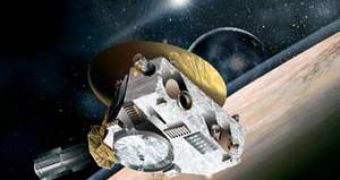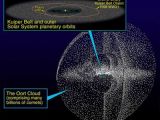If all goes well the first probe to Pluto will leave Earth on January 17. This will be the longest mission NASA has planned so far and the probe, dubbed New Horizons, will be the fastest spacecraft ever. It will reach lunar orbit distance in just nine hours (Apollo missions needed several days) and will pass near Jupiter 13 months later in early 2007.
Launching the probe before February 3 allows New Horizons to fly past Jupiter and use the planet's gravity as a slingshot toward Pluto. The probe will reach Pluto in July 2015 and will conduct a five month study which is possible only from such a close distance. It will characterize the global geology and geomorphology of Pluto and Charon (Pluto's largest moon), map their surface compositions and temperatures, and examine Pluto's atmospheric composition and structure. New Horizons also will study the small moons recently discovered in the Pluto system.
The entire spacecraft operates on less power than a pair of 100-watt household light bulbs. Its electricity source is a single radioisotope thermoelectric generator. From Pluto's distance the Sun is seen as merely one bright star, the day being no different from the night; thus, the probe couldn't use solar energy.
Pluto is the largest object in the Kuiper belt - an area of the Solar system beyond Neptune comprising a number of fairly large asteroids. Beyond the Kuiper belt there is the Oort Cloud comprising many billions of comets. The origins of the Kuiper belt are not entirely settled. Modern computer simulations suggest that the Kuiper belt have been formed by the work of Jupiter, the young Jupiter having used its considerable gravity to eject smaller bodies which didn't all escape completely. The same simulations and other theories predict there should be bodies of significant mass in the belt, Mars-sized or Earth-sized. The existence of such large objects could explain the fairly sharp drop off in objects beyond a certain distance (this gap, called the Kuiper gap, separates the Kuiper belt from the Oort Cloud). Thus, this mission to Pluto could give voluble information about the formation of the Solar system.
"Exploring Pluto and the Kuiper Belt is like conducting an archeological dig into the history of the outer solar system, a place where we can peek into the ancient era of planetary formation," said Alan Stern, New Horizons' principal investigator.

 14 DAY TRIAL //
14 DAY TRIAL // 
